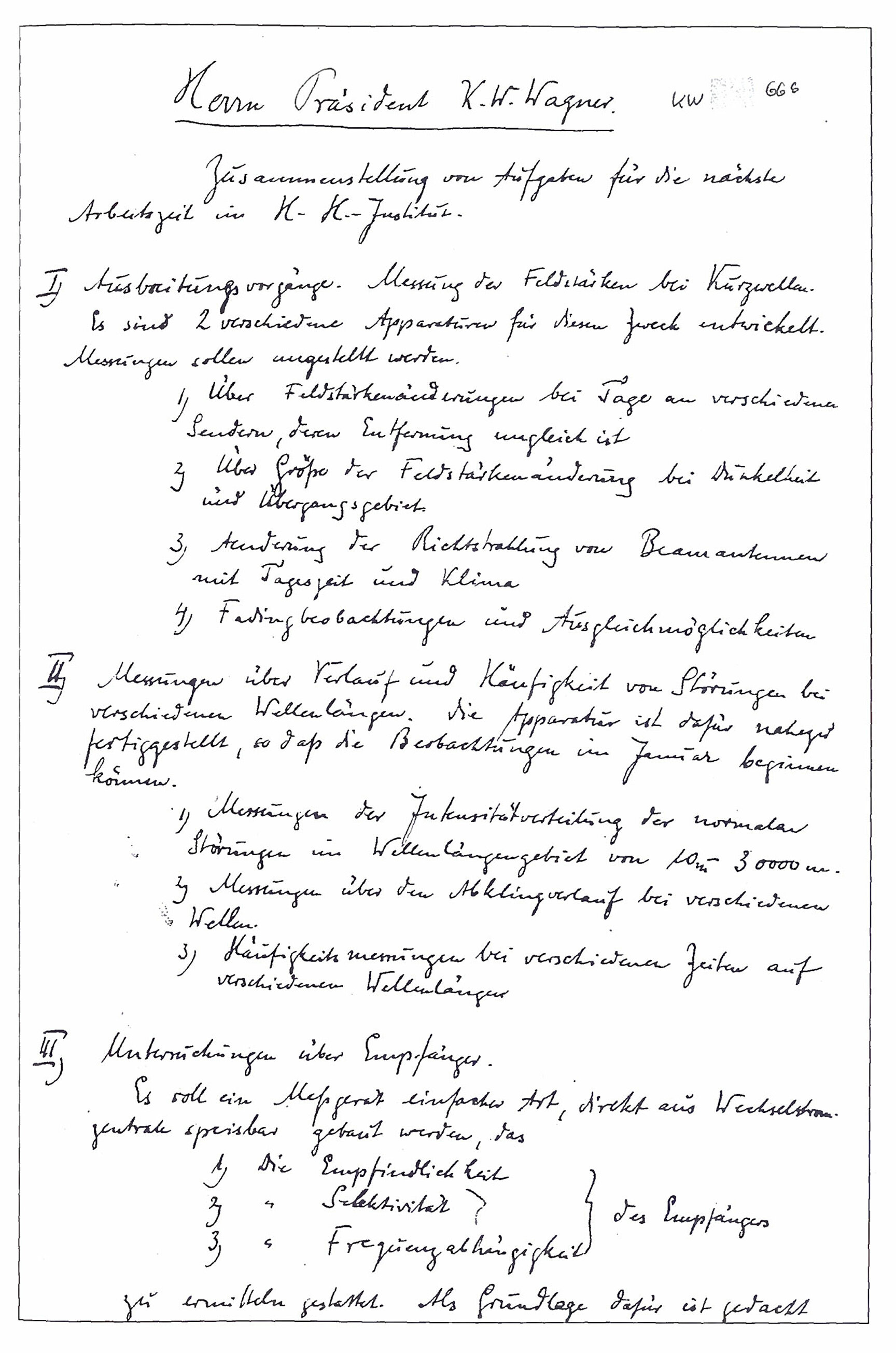1928
The institute was officially founded on February 23rd in 1928 as Heinrich-Hertz-Institut for Oscillation Research. Before it could start its work however, key positions needed to be filled with renowned experts. Handwritten notes of Professor Gustav Leithäuser, who was recently appointed department manager, offer an overview of the tasks facing the Institute.
In February 1928, the Institute’s finances seemed secure – a perfect moment to arrange provisions concerning the staff. Professor Karl Willy Wagner planned to organize the Institute in four separate departments, each headed by a dedicated Department Manager: The Telegraphy and Telephony department should be headed by Dr. Hans Salinger. Professor Dr. Wilhelm Hort was his favorite candidate for the Mechanical Oscillation department. The researcher Dr. Erwin Meyer was entrusted with the Acoustics department. Professor Dr. Gustav Leithäuser was chosen by Professor Wagner to head the High-Frequency Technology department. The plan to establish regular positions for associate professors at the Technical University however, turned out to be problematic for Dr. Salinger and Prof. Dr. Leithäuser.
Professor Wagner submitted a request for the creation of the new positions to Senator Professor Dr. Matthias, which was rejected initially. The representatives of the Technical University could not accept the additional permanent positions, which would lead to the expansion of the faculty. After multiple intensive debates with officials from the Prussian Ministry of Research, Art, and Education, a compromise was finally accepted: Professor Dr. Leithäuser and Dr. Salinger would be offered positions as honorary professors. Finally, all of the chosen department managers were able to take up their work at the Institute in 1929.
The handwritten notes of Prof. Leithäuser provide an insight into the everyday working life of that time. In his notes, he described future activities, such as the measurement of field strengths in shortwave transmissions, for which there were two possible devices at that time. Prof. Leithäuser also wanted to test changes in the field strength during daylight and in darkness, planned to research interferences at different wavelengths and intended to conduct absorption tests during fog. Apart from that, there were additional research projects in the field of television technology: For instance, Prof. Leithäuser wondered under what circumstances an interference-free reception would be possible with an indoor antenna – the basis of innovative developments.
